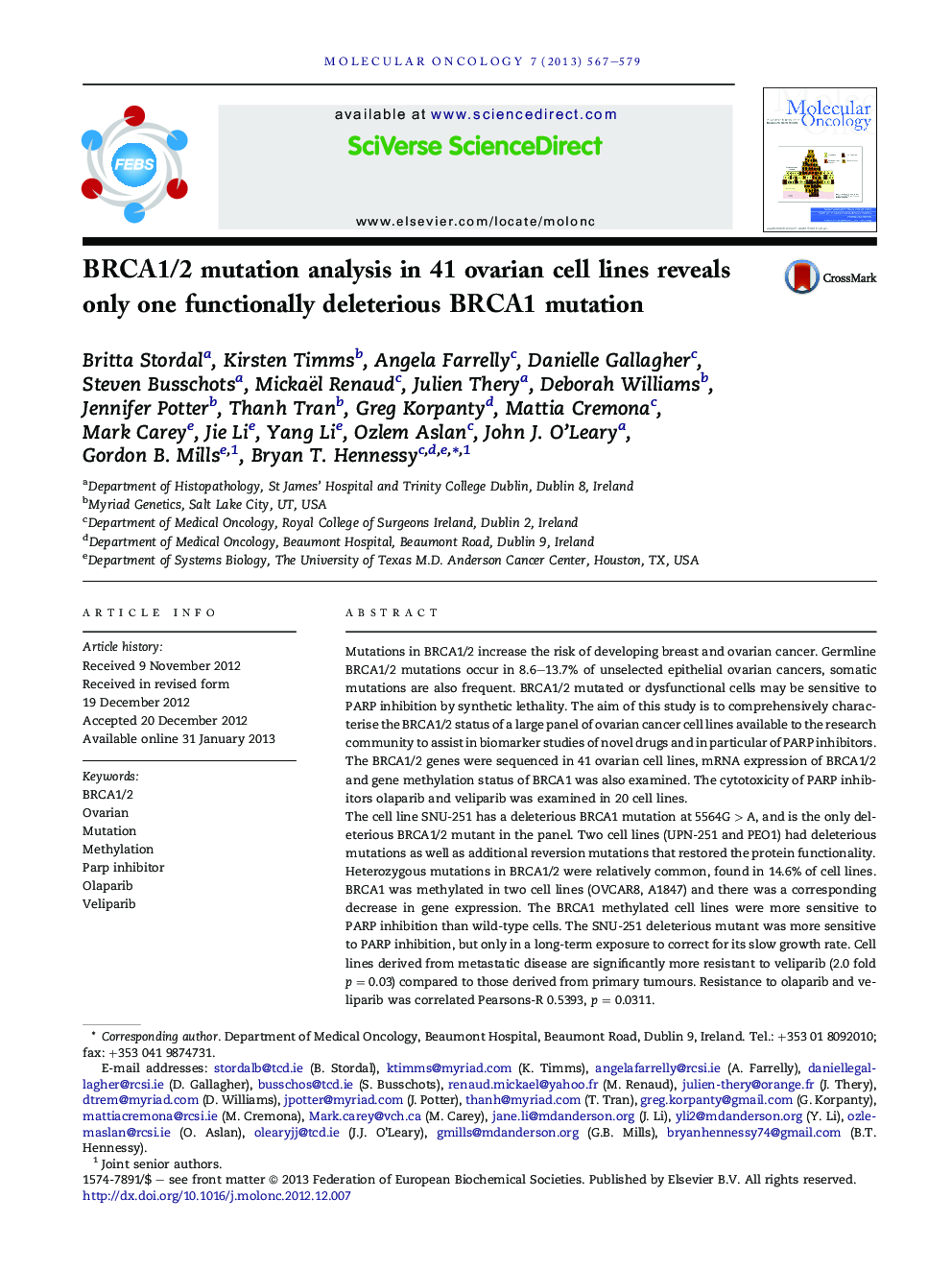| Article ID | Journal | Published Year | Pages | File Type |
|---|---|---|---|---|
| 2145724 | Molecular Oncology | 2013 | 13 Pages |
Mutations in BRCA1/2 increase the risk of developing breast and ovarian cancer. Germline BRCA1/2 mutations occur in 8.6–13.7% of unselected epithelial ovarian cancers, somatic mutations are also frequent. BRCA1/2 mutated or dysfunctional cells may be sensitive to PARP inhibition by synthetic lethality. The aim of this study is to comprehensively characterise the BRCA1/2 status of a large panel of ovarian cancer cell lines available to the research community to assist in biomarker studies of novel drugs and in particular of PARP inhibitors.The BRCA1/2 genes were sequenced in 41 ovarian cell lines, mRNA expression of BRCA1/2 and gene methylation status of BRCA1 was also examined. The cytotoxicity of PARP inhibitors olaparib and veliparib was examined in 20 cell lines.The cell line SNU-251 has a deleterious BRCA1 mutation at 5564G > A, and is the only deleterious BRCA1/2 mutant in the panel. Two cell lines (UPN-251 and PEO1) had deleterious mutations as well as additional reversion mutations that restored the protein functionality. Heterozygous mutations in BRCA1/2 were relatively common, found in 14.6% of cell lines. BRCA1 was methylated in two cell lines (OVCAR8, A1847) and there was a corresponding decrease in gene expression. The BRCA1 methylated cell lines were more sensitive to PARP inhibition than wild-type cells. The SNU-251 deleterious mutant was more sensitive to PARP inhibition, but only in a long-term exposure to correct for its slow growth rate. Cell lines derived from metastatic disease are significantly more resistant to veliparib (2.0 fold p = 0.03) compared to those derived from primary tumours. Resistance to olaparib and veliparib was correlated Pearsons-R 0.5393, p = 0.0311.The incidence of BRCA1/2 deleterious mutations 1/41 cell lines derived from 33 different patients (3.0%) is much lower than the population incidence. The reversion mutations and high frequency of heterozygous mutations suggest that there is a selective pressure against BRCA1/2 in cell culture similar to the selective pressure seen in the clinic after treatment with chemotherapy. PARP inhibitors may be useful in patients with BRCA1 deleterious mutations or gene methylation.
► First study of BRCA1/2 mutation and methylation in ovarian cancer cell lines. ► BRCA1/2 mutations are much less common in cell lines than in the clinic. ► There is a selective pressure against BRCA1/2 mutations in cell culture. ► BRCA1/2 methylated and mutated cell lines are more sensitive to parp inhibitors.
